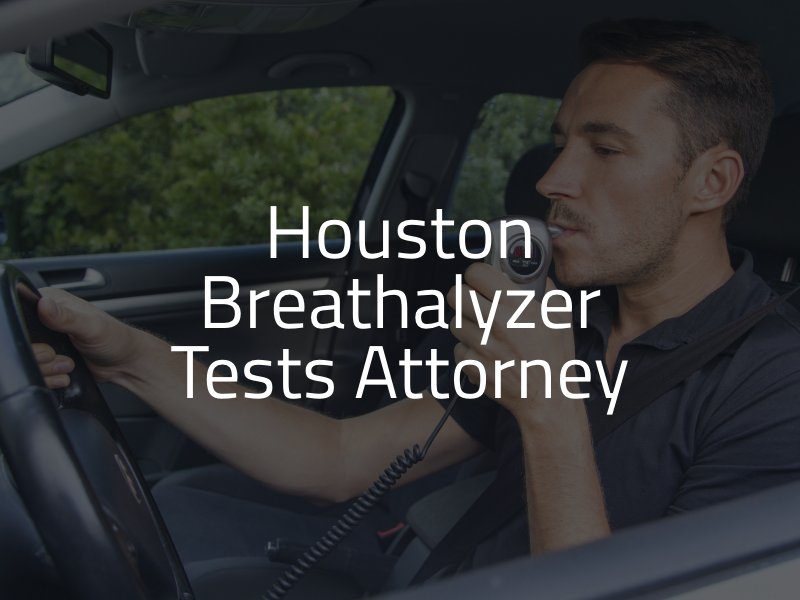
The first breathalyzer was manufactured nearly seventy years ago and today may be the most misunderstood tool in law enforcement’s arsenal to fight drunk driving. To begin with a breathalyzer is a machine that measures the amount of alcohol on your breath and not the actual amount of alcohol in your blood – to do that would require an analysis of a blood sample.
This is just one of the misconceptions surrounding the machine that police have come to rely on when attempting to determine a driver’s level of intoxication. If you were arrested for driving under the influence and a breathalyzer was used, you may have ground to fight your charges. Contact the Houston DWI lawyers today at the Law Offices of David A. Breston. We believe you shouldn’t be charged for a crime if a product is defective, call now at (713) 224-4040.
The most common tool used by law enforcement to determine a driver’s blood alcohol content level is the breathalyzer test. However, it has lately been the subject of much controversy because it has been shown time and again to be an unreliable indicator of authentic blood-alcohol concentration level results. Let’s first consider the definitions of some of the more pertinent related language.
Blood alcohol content (also termed blood alcohol concentration). It is a metric of the level of intoxication used for medical or legal purposes and indicates the percentage of alcohol in an individual’s blood. As an example, if you were to have a blood alcohol content reading of 0.10% then this would mean that 1/10 of 1% of your blood is actually alcohol.
A breathalyzer is a device for determining the blood alcohol content of an individual through a sample of his or her breath. Originally a brand name (think kleenex) it has morphed into a generic term for any machine that can perform this function. A breathalyzer is considered to be a scientific device. According to law enforcement, the advantage of its use is its non-invasive ability to gauge a level of intoxication versus medically withdrawing a blood sample with the use of a needle. Scientifically speaking, when a person drinks alcohol it is not digested but, rather, absorbed through the membranes in one’s mouth and throat, stomach, and intestines.
From here it passes into the bloodstream and leaves the body when a person exhales. The amount of alcohol in each exhalation is equal to the amount of alcohol in one’s bloodstream. When a person breathes into a breathalyzer the air mixes with a chemical solution that causes a color change that is compared to a color chart for interpretation.
To the layman, it may sound infallible but consider the following problems that have occurred.
Most unsettling of all is the fact that police departments across the country have been found to admit to the unreliability of these machines. In Virginia, an internal forensics document was uncovered that stated the current breathalyzers in use by law enforcement were ‘unreliable and outdated’. In New Jersey, the judge himself threw out a DUI case after calling the breathalyzer results unreliable. Finally, there is evidence that police officers themselves have been found to tamper with the breathalyzer results.
The State of Texas uses a machine called the Intoxilyzer 5000, which is commonly referred to as a breathalyzer. Breath testing is predicated on Henry’s law of physics, which states that if temperature, and pressure are held constant, the substances in the corresponding gases and liquids will reach equilibrium and will be present in equal proportions. This means that the same concentration of a substance will be present in liquid and gaseous states. The problem is that if someone’s temperature is above 98.6 they will probably have a higher breath test result.
In all dwi cases, the prosecution must prove that the defendant’s blood alcohol concentration at the time of the offense was at or above a statutory limit. In many states, the limit is .10 percent, but in others such as Texas it is .08, and there is a national movement afoot to make that the limit in all states. For those with a commercial drivers license driving a commercial vehicle at the time of the dwi, need to have an alcohol concentration of less than .04. In order to prove the requisite level of alcohol in the blood of someone arrested for drunk driving, it is necessary to obtain a suitable sample of the arrestee’s blood, urine, or hair at the time of arrest. The use of a breathalyzer test is by far the most popular scientific method for establishing that drunk driving has occurred. Some defendants, however, have been able to successfully challenge the results of such tests in court, thereby preventing a conviction.
An experienced Houston criminal defense attorney is in the best position to advise a client on whether the breathalyzer test results may be subject to challenge in his or her particular case. David A. Breston generally challenges Intoxilyzer 5000 results based on the following grounds:
Any of these details may show the inaccuracy of Intoxilyzer 5000 results, and Mr. Breston may be able to suppress this false evidence and get the charges against you dropped. If you were charged with possession of drugs in Houston, then you may need to contact the drug crime lawyers at The Law Office of David A. Breston for more information about facing your case.
Often the results of a blood alcohol content reading become the cornerstone of the prosecution’s case against the alleged drunk driver. This is an important fact that cannot be overlooked when one is stopped and then arrested for suspicion of driving while intoxicated. Due to the fact that the machine and potential results are riddled with problems, it is most likely a better choice to refuse law enforcement’s request for a breathalyzer test and request to speak with an attorney instead.